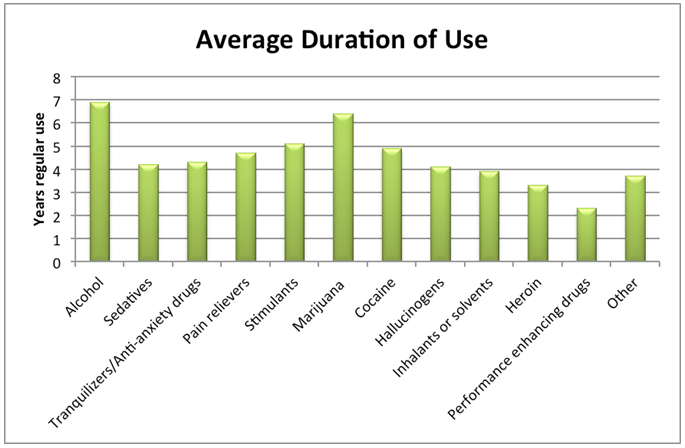College settings can trigger relapse
College is a transitional period in a young adult’s life marked by decreased supervision and structure and an expansion of freedoms, including a greater opportunity to engage in alcohol and other recreational drug use. For young adults in recovery from a substance use disorder (SUD) who wish to start or return to college, such settings can present a formidable relapse risk and threat to recovery.
Collegiate recovery programs (CRP) are a form of support service created to meet the needs of college students in recovery. While services may vary by location, most CRPs offer onsite sober housing, mutual-help meetings (e.g., Alcoholics Anonymous), individual counseling, sober events, and seminars on relevant topics.
Since many collegiate recovery programs (CRPs) have limited resources to evaluate their programs, there is a lack of information on the students who use these services.
To better inform future collegiate recovery program (CRP) development, Laudet and colleagues used an online survey to characterize CRP students nationwide. The survey assessed mental health, substance use involvement, behavioral addictions (e.g., eating disorders or sex addiction), and utilization of services and recovery resources. The authors received responses from 486 participants from the 29 existing CRPs representing 19 U.S. states (constituting about 81% of the estimated 600 students in collegiate recovery programs). Eighty-five percent of CRPs were part of public (vs. private) academic institutions.
Over half of participants were male and over 90% were Caucasian. The average age was 26 but ranged from 17 to 58. Most participants lived off campus. About a half of participants were living with a roommate who was also in recovery, and a quarter lived with someone who was actively using drugs and/or alcohol. Three quarters reported a history of mental health treatment, primarily for depression, anxiety disorders, and bipolar disorder. More than half reported a drug addiction (vs. alcohol) as their primary problem. Ten percent reported a behavioral addiction in addition to their primary substance use.

The average time since last alcoholic drink and last drug use was 2.6 and 2.9 years, respectively. Only 5% had consumed alcohol and/or used drugs in the past month. Almost 90% considered themselves in recovery from a substance and/or behavioral addiction with over 80% having received addiction treatment in the past. About 93% of participants had ever attended a 12-step meeting. Of these, 90% of participants had attended a meeting in the past month.
IN CONTEXT
Collegiate recovery programs (CRPs) are an important resource for students in recovery as the changes and stress associated with college have the potential to threaten the recovery process. This survey had several findings that may be important for modifications to existing CRPs and the development of new ones.
Given that the typical patient in substance use disorder treatment is between 18 and 25, younger students (those earlier in the recovery process) may not be utilizing existing services. Thus, greater outreach and linkage to care is needed for this age group.
This sample also reported high rates of smoking (40% compared to the national rate of 18%). While smoking patterns amongst students in recovery is an understudied topic, collegiate recovery programs (CRPs) may need additional programming to address this issue (e.g., access to smoking cessation interventions). These students also reported behavioral addictions and co-occurring mental health issues suggesting a further need for ongoing services that can address comorbidities concurrently.
Federal agencies including the Office of National Drug Control Policy have called for an expansion of community-based recovery support models in colleges.
NEXT STEPS
More research is needed to investigate the comparative effectiveness of collegiate recovery programs (CRPs) relative to “college as usual”, and which specific CRP components seem to produce specific recovery benefits, and for which types of recovering students.
- LIMITATIONS
-
This sample of collegiate recovery program (CRP) students was older than traditional college students, which may influence the types of services that are needed.
BOTTOM LINE
- For individuals & families seeking recovery: Collegiate recovery programs (CRPs) can provide support to help you maintain sobriety. Look for campuses that offer supportive services or have a CRP. If your school does not currently offer these services, seek community-based recovery resources in your area or start a mutual-help group on campus.For scientists: Collegiate recovery programs (CRPs) are currently an understudied area. As more are established, it is important to evaluate their effectiveness and to gather information on what services should be offered. Longitudinal studies to examine the benefit of CRPs is a logical next step. While benefit may differ by location, it is crucial overall that CRPs effectively serve the population they aim to support.
- For scientists: Collegiate recovery programs (CRPs) are currently an understudied area. As more are established, it is important to evaluate their effectiveness and to gather information on what services should be offered. Longitudinal studies to examine the benefit of CRPs is a logical next step. While benefit may differ by location, it is crucial overall that CRPs effectively serve the population they aim to support.
- For policy makers: While federal agencies have noted the importance of expanding community-based recovery support models, with only 150+ Collegiate recovery programs (CRPs) currently in existence among several thousand colleges across the U.S., it is important to develop new programs in a timely manner to support a motivated, but vulnerable group of young recovering individuals. Ideally, these programs will be provided with resources to evaluate their effectiveness.
- For treatment professionals and treatment systems: If you are treating a patient who will soon be entering or re-entering college, work with them to locate and connect them to on-campus recovery support services well before they are due to arrive to optimize the chances of a successful transition and reduce the likelihood of relapse.
CITATIONS
Laudet, A. B., Harris, K., Kimball, T., Winters, K. C., & Moberg, D. P. (2015). Characteristics of students participating in collegiate recovery programs: A national survey. Journal of substance abuse treatment, 51, 38-46.

